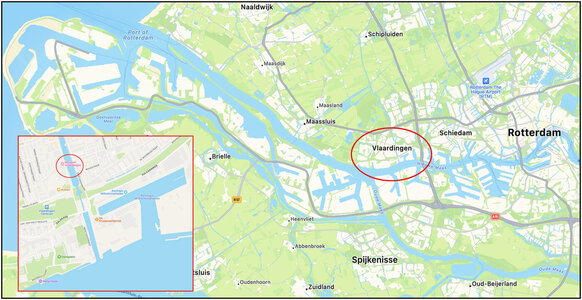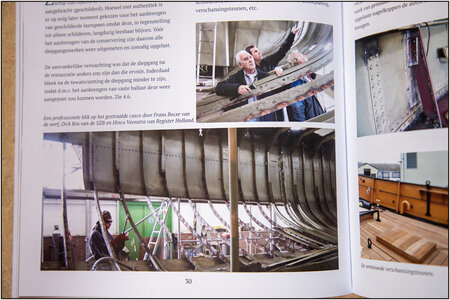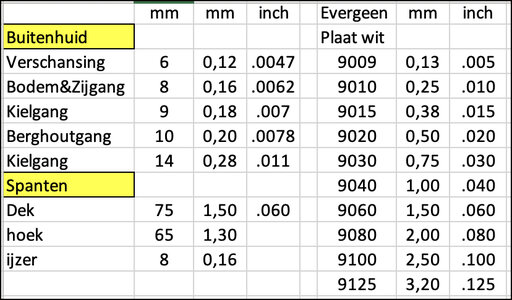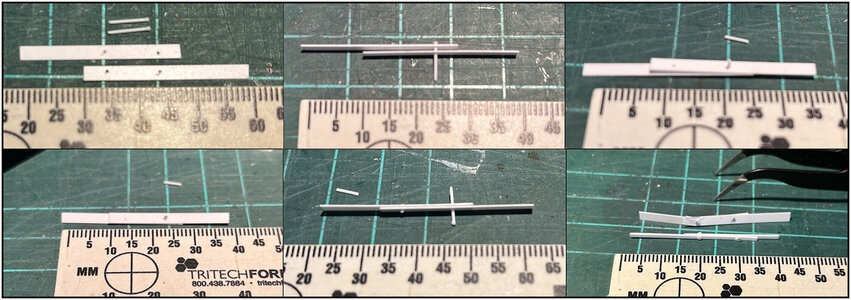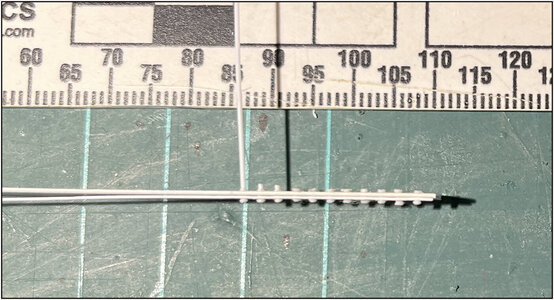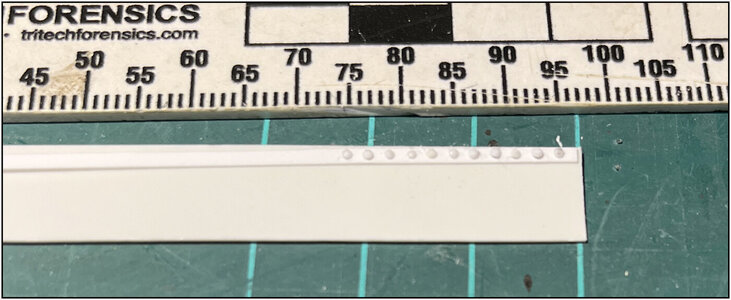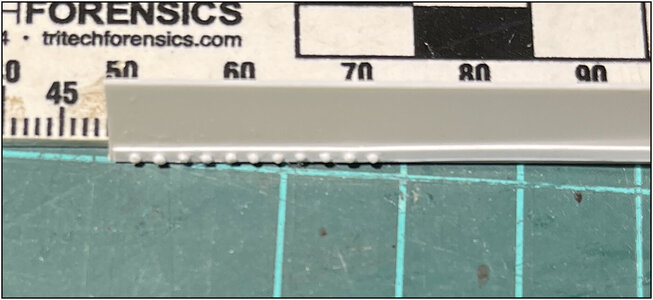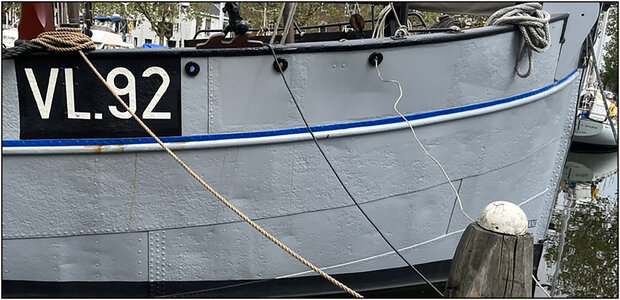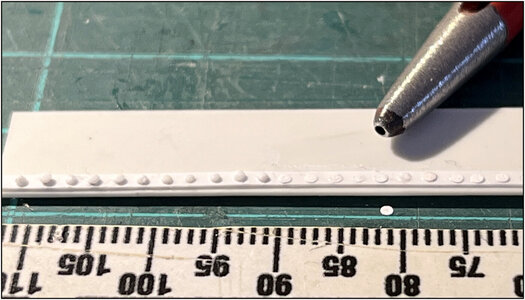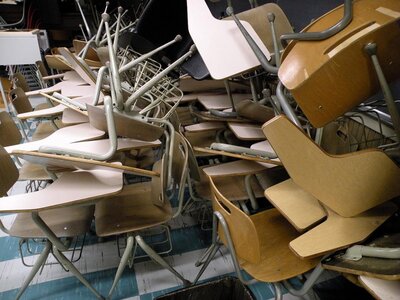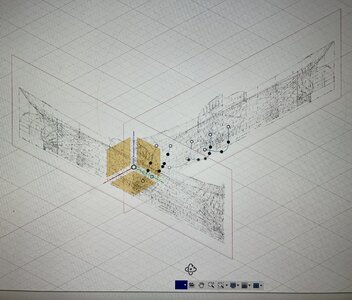It's time for a new build-log.
Towards the end of the build of my Bluenose, there was the thought of what to building.
Of course, that had to be a challenge (again).
I had already suggested building a Vlaardingen herring sail lugger from around 1900.
My place of birth is Vlaardingen, and my grandfather was a herring cooper. He made barrels for herring fishing. So, the choice becomes a lot easier.
I already posted this picture:
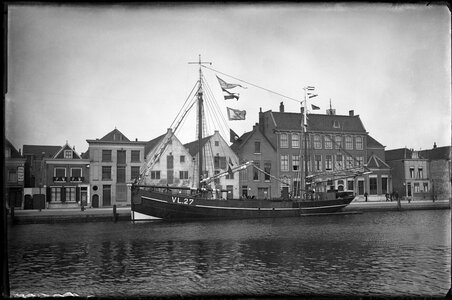
If you take a closer look at the picture, on the back is a wheelhouse, so apparently the old VL.27 has been modified. The old lugger had a tiller on the open aft deck.
After that several loggers passed and I went through the list of Vlaardingen loggers on this site:
--> List of VL-luggers <--
The choice was soon reduced to a 'riveted steel sail lugger' from around 1900.
And my intention was to completely copy it in terms of construction, so with frames and rivets. For that I had to have clear construction drawings.
I have consulted many sites and caves of the internet, but in the field of construction drawings ………… almost nothing to find. Except for 1 source ………….
The 'Balder' I mentioned earlier. The restored sail lugger that is now in the harbor of Vlaardingen. The ship is owned by Stichting Museum Vlaardingen (SMV), the former Fisheries Museum, and has been transferred on loan to Stichting Zeillogger Balder (SZB).
History of the Balder: (largely taken from the restoration book of the SZB)
The Balder was built in 1912 in Vlaardingen at the yard of A. de Jong on behalf of ‘Visscherij Maatschappij Mercurius’. She served as VL.92 Balder until 1921:
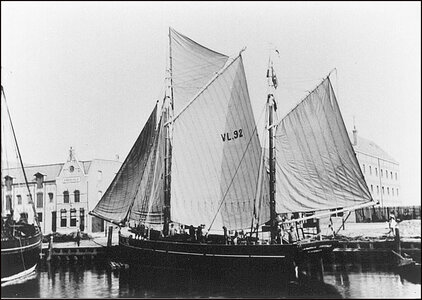
In 1929 it was sold to the Scheveningen shipping company Arie van der Zwan and was named SCH.14 OCEAAN. The ship owner has lengthened the ship and put an engine in it.
During WW-II it was requisitioned by the occupiers. After the war she was used again for fishing.
Until 1976 she was used as ZEEAREND as a training ship for the fishing industry in Scheveningen.
In 1977 she was transferred to the Scheepvaart Museum in Amsterdam for 1 guilder. There she was restored for 10 years, brought back to her original length and added to the collection. They made a nice book of that restoration :
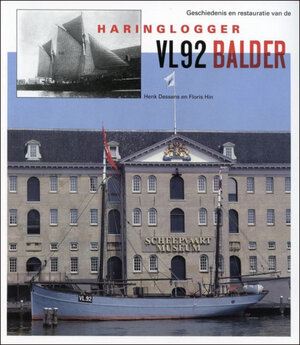
The project leader of the restoration, Sybe de Jong, has made a model of the Balder that is still in the collection of the Scheepvaartmuseum:
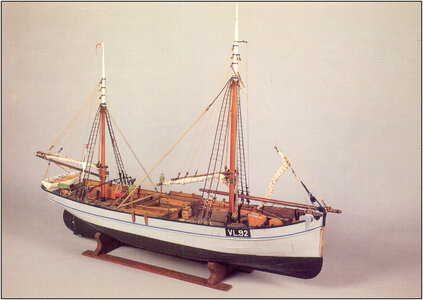
In 2006 she was transferred to the SMV for 1 euro in bad condition.
After a preparation of 2.5 years, she left on 06-12-2013 for restoration to the Bocxe shipyard in Delft. Of this restoration, the SZB made also a restoration book:
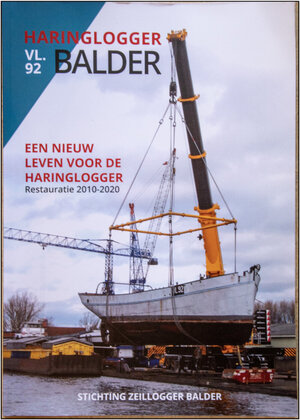
The test run was held on 22-09-2016 and then moored in the port of Vlaardingen with a berth for the SMV:
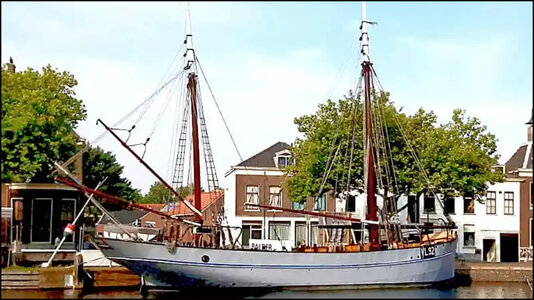
--> SZB web-site <--
--> Inter-active BALDER website <--
I have been a donor to the SZB and have contacted the chairman to obtain more information from the Balder. I spoke extensively with him.
More to come ......
Regards, Peter
Towards the end of the build of my Bluenose, there was the thought of what to building.
Of course, that had to be a challenge (again).
I had already suggested building a Vlaardingen herring sail lugger from around 1900.
My place of birth is Vlaardingen, and my grandfather was a herring cooper. He made barrels for herring fishing. So, the choice becomes a lot easier.
I already posted this picture:

If you take a closer look at the picture, on the back is a wheelhouse, so apparently the old VL.27 has been modified. The old lugger had a tiller on the open aft deck.
After that several loggers passed and I went through the list of Vlaardingen loggers on this site:
--> List of VL-luggers <--
The choice was soon reduced to a 'riveted steel sail lugger' from around 1900.
And my intention was to completely copy it in terms of construction, so with frames and rivets. For that I had to have clear construction drawings.
I have consulted many sites and caves of the internet, but in the field of construction drawings ………… almost nothing to find. Except for 1 source ………….
The 'Balder' I mentioned earlier. The restored sail lugger that is now in the harbor of Vlaardingen. The ship is owned by Stichting Museum Vlaardingen (SMV), the former Fisheries Museum, and has been transferred on loan to Stichting Zeillogger Balder (SZB).
History of the Balder: (largely taken from the restoration book of the SZB)
The Balder was built in 1912 in Vlaardingen at the yard of A. de Jong on behalf of ‘Visscherij Maatschappij Mercurius’. She served as VL.92 Balder until 1921:

In 1929 it was sold to the Scheveningen shipping company Arie van der Zwan and was named SCH.14 OCEAAN. The ship owner has lengthened the ship and put an engine in it.
During WW-II it was requisitioned by the occupiers. After the war she was used again for fishing.
Until 1976 she was used as ZEEAREND as a training ship for the fishing industry in Scheveningen.
In 1977 she was transferred to the Scheepvaart Museum in Amsterdam for 1 guilder. There she was restored for 10 years, brought back to her original length and added to the collection. They made a nice book of that restoration :

The project leader of the restoration, Sybe de Jong, has made a model of the Balder that is still in the collection of the Scheepvaartmuseum:

In 2006 she was transferred to the SMV for 1 euro in bad condition.
After a preparation of 2.5 years, she left on 06-12-2013 for restoration to the Bocxe shipyard in Delft. Of this restoration, the SZB made also a restoration book:

The test run was held on 22-09-2016 and then moored in the port of Vlaardingen with a berth for the SMV:

--> SZB web-site <--
--> Inter-active BALDER website <--
I have been a donor to the SZB and have contacted the chairman to obtain more information from the Balder. I spoke extensively with him.
More to come ......
Regards, Peter
Last edited:



